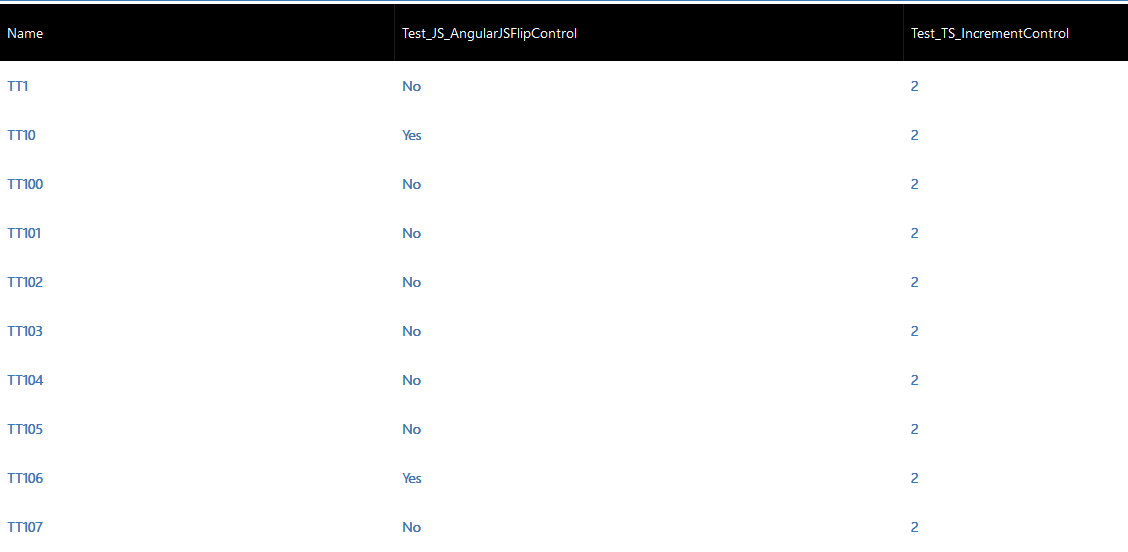Implementing table grid component
This sample showcases how to create a simple dataset component, view's column metadata binding, record binding, more records from paging and record navigation to form. The component header columns and internal record values are bound to the existing views.

Available for
Model-driven apps
Code
You can download the complete sample component from here.
Column Header bind to the View :
View column info lies at context.parameters.[dataset_property_name].columns. It's an array type.
Record binding :
- The sorted record Ids are at
context.parameters.[dataset_property_name].sortedRecordIds - All records info is at
context.parameters.[dataset_property_name].records - For each record object,
context.parameters.[dataset_property_name].records[record_Id] - Formatted value could be retrieved at
getFormattedValue
Load more page of data if needed :
context.parameters.[dataset_property_name].paging will provide paging functionality like hasNextPage and loadNextPage data. The Load More button is shown if it has next page data.
This sample also showcases how the component listens to the container resize.
The trackContainerResize method should be called within init method so that the mode.allocatedWidth and mode.allocatedHeight will be provided each time updateView being called. If this method is not being called initially, then they don't have allocatedWidth and allocatedHeight provided.
If the allocatedHeight is –1, that means there is no limit on height. The component should adjust its height based on the provided width.
Related topics
Download sample components
How to use the sample components
Power Apps component framework API reference
Power Apps component framework manifest schema reference
Feedback
Coming soon: Throughout 2024 we will be phasing out GitHub Issues as the feedback mechanism for content and replacing it with a new feedback system. For more information see: https://aka.ms/ContentUserFeedback.
Submit and view feedback for